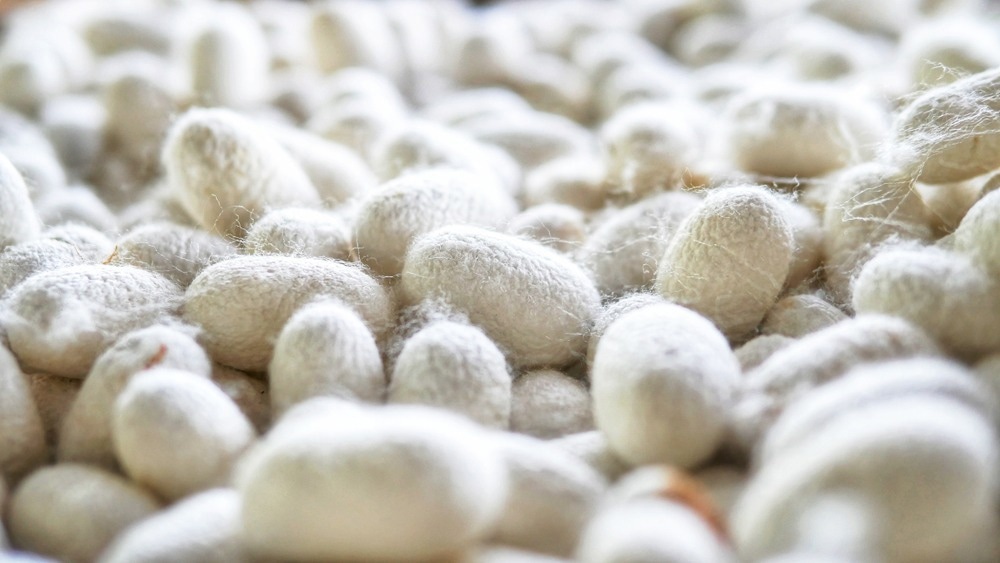Scientists from China have investigated the use of silk sericin, a protein that naturally occurs in silkworm cocoons, in biomedical applications. Their findings have been published in a pre-print paper in the journal Biomaterials.

Study: Silk sericin-based materials for biomedical applications. Image Credit: StopperOhana/Shutterstock.com
Silk Use
The history of silk use can be traced back for millennia in countries such as India and China. This natural material, produced by lepidopteran insects, is abundant and has a short production cycle. Throughout history, silk has been primarily used in the textiles industry.
Silk contains beneficial properties which make it ideal for consideration for applications in multiple industries. Recently, this biomaterial has been the focus of research in the biomedical industry for a wide variety of uses. These include tissue engineering, drug delivery, and wearable electronics.
Silk Proteins in Biomedicine
There are two main proteins in silk: sericin and fibroin. Whilst fibroin has been extensively explored for biomedical applications due to beneficial characteristics such as elasticity, biocompatibility, biodegradability, and mechanical properties, sericin has been largely unexplored and treated as a waste material in the textiles industry.
Disposing of sericin as waste presents critical environmental issues due to pollution and valuable biomaterials are potentially lost in the process. However, recent research has indicated that sericin has beneficial properties for the biomedical industry, making it as attractive a material as fibroin.
Aside from being biodegradable, sericin has excellent biological properties. Recent studies have also indicated that sericin has low immunogenicity. This material can promote cell attachment, proliferation, and differentiation, which are essential for biomedical applications such as tissue engineering. Moreover, sericin possesses antioxidant properties.
Modification, cross-linking with other polymers, and precipitation can be used to prepare controllable and stable biomaterials from sericin. This allows the mechanical, physical, and chemical properties of this protein as well as its morphology to be precisely tuned to tailor biomaterials for a variety of medical purposes.
Utilizing silk sericin not only has vast potential for the medical industry, but the use of this biomaterial also helps to solve critical waste issues in the textiles industry. Converting silk sericin waste into value-added biomedical products improves sustainability, circularity, and removes a major source of environmental pollution in the industry.
The Study
The paper has reviewed current perspectives on silk sericin use in the biomedical industry. Properties and structure of this protein, platforms, applications such as tissue engineering and drug delivery, and future prospects have been highlighted and discussed in depth. A total of 193 studies have been reviewed by the authors.
Structure and Composition
Proteins compose around 90% of sericin, with the remaining components composed of impurities such as sugars, waxes, pigments, and mineral salts. Sericin is water-soluble, possessing elevated proportions of polar amino acids which can be modified by various methods. Sericin possesses a stratified structure, with the secondary structure mainly composed of β-sheets and random coils.
The presence of random coils can affect properties such as mechanical strength and fragility in dry materials, facilitating the need for modification by thermal and chemical means. However, elevated temperatures can destroy the β-sheets. Chemical methods better preserve these structures.
Extraction Methods
Silkworm cocoons are boiled to extract fibroin in a mixture of Marseille soap and sodium carbonate in the textiles industry. While efficient, this process has cost issues and wastes sericin. HTHP and IR dyeing machines have been used in recent years to overcome issues with conventional extraction methods. Chemical reagents can also improve the processes.
Extraction methods can produce sericin with different conformations. A critical issue when using sericin for biomedical applications is the host’s native immune response, as sericin is a foreign protein. Harsh processes can impede the biological activities of this biomaterial. Therefore, researchers need to carefully select the appropriate process depending on the desired application.
Current Perspectives
Several biomaterials, from nano-sized to bulk materials, have been investigated and developed, but until now no viable commercial devices have been reported. Issues hindering commercial development include sericin’s status as a waste material, long-term misunderstandings of the material’s immunogenicity, and the challenging nature of producing high-quality sericin proteins.
The underlying mechanisms of how sericin promotes tissue repair are not properly understood currently. Previous work by the authors has sought to promote clarity on this issue. The presence of random coils in sericin has a deleterious effect on the mechanical stability of products and extraction methods can reduce peptide molecular weight. Furthermore, there are regulatory issues.
Despite the current issues with developing commercially viable sericin-based biomaterials for biomedical applications, there is enormous potential for this natural material in future research. Wearable electronic devices based on this protein can monitor biological functions in patients, and there is potential for developing sericin-based 3D printable materials and devices such as nanorobots.
References and Further Reading
Liu, J et al. (2022) Silk sericin-based materials for biomedical applications Biomaterials 121638 [online, pre-proof] sciencedirect.com. Available at: https://doi.org/10.1016/j.biomaterials.2022.121638
Disclaimer: The views expressed here are those of the author expressed in their private capacity and do not necessarily represent the views of AZoM.com Limited T/A AZoNetwork the owner and operator of this website. This disclaimer forms part of the Terms and conditions of use of this website.
Sources:
Silkworms, mites, spiders, scorpions, and flies are sources of silk proteins, among the various lepidopteran insects.
Sericin is found in the periphery of cocoons, the most common being from various species of silkworms. The proportion of sericin is dependent upon silkworm species. Recent developments in areas such as bioengineering have created cocoons with enhanced levels of sericin.